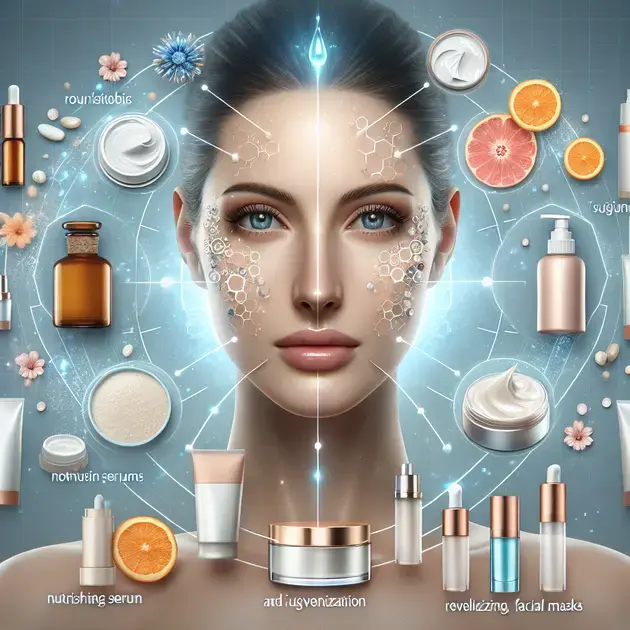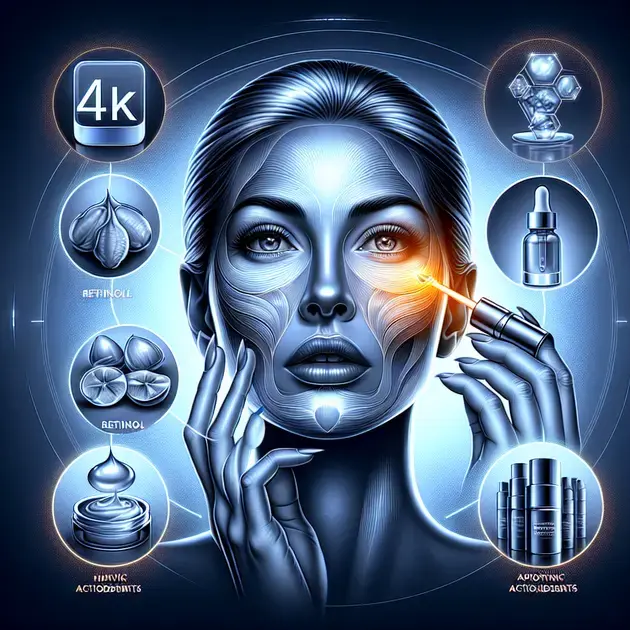Understanding the Transition from Type 1 to Type 2 Diabetes is crucial for individuals diagnosed with diabetes. While Type 1 and Type 2 diabetes are distinct conditions, there is a growing body of research indicating a potential transition between the two types. This transition poses unique challenges for both patients and healthcare providers.
Recent studies have shed light on the factors that may contribute to the shift from Type 1 to Type 2 diabetes, including genetic predisposition, environmental influences, and lifestyle choices. By gaining a deeper understanding of this transition, healthcare professionals can develop more personalized and effective treatment strategies to manage the disease progression effectively.

Understanding the Link Between Type 1 and Type 2 Diabetes
Type 1 and Type 2 diabetes are both conditions related to how the body regulates blood sugar levels, but they have distinct differences. Type 1 diabetes is an autoimmune disease where the immune system attacks insulin-producing cells in the pancreas. On the other hand, Type 2 diabetes is characterized by insulin resistance, where the body’s cells do not respond effectively to insulin. Despite their differences, there are some factors that link these two types of diabetes.
One key factor in the link between Type 1 and Type 2 diabetes is genetics. While Type 1 diabetes is largely believed to be influenced by genetic factors, Type 2 diabetes is also influenced by family history and genetics. Research has shown that individuals with a family history of diabetes are at a higher risk of developing either Type 1 or Type 2 diabetes.
Another factor that plays a role in the link between the two types of diabetes is lifestyle. Poor diet, lack of physical activity, and obesity are risk factors for both Type 1 and Type 2 diabetes. It is important for individuals at risk of either type of diabetes to maintain a healthy lifestyle to reduce their chances of developing the condition.
Furthermore, inflammation and oxidative stress are common factors that contribute to both Type 1 and Type 2 diabetes. Chronic inflammation and oxidative stress can impair insulin production and lead to insulin resistance, contributing to the development and progression of diabetes.
Understanding the link between Type 1 and Type 2 diabetes can help healthcare providers better tailor treatment approaches for individuals with diabetes. By addressing common factors that influence both types of diabetes, personalized treatment plans can be developed to effectively manage the condition.
Exploring Factors Influencing the Transition
The transition from prediabetes to Type 2 diabetes is influenced by various factors that can impact an individual’s health outcomes. Prediabetes is a condition where blood sugar levels are higher than normal but not high enough to be classified as Type 2 diabetes. Understanding the factors that influence this transition is crucial in preventing the onset of Type 2 diabetes.
Regular Monitoring:
One key factor influencing the transition from prediabetes to Type 2 diabetes is regular monitoring of blood sugar levels. Using apps like MySugr or Glucose Buddy can help individuals track their blood sugar levels, diet, and exercise routines. By monitoring these metrics regularly, individuals can identify trends and make necessary lifestyle changes to prevent the progression to Type 2 diabetes.
Healthy Eating Habits:
Adopting healthy eating habits is essential in preventing the transition to Type 2 diabetes. Apps like MyFitnessPal or Lose It! can help individuals track their food intake and make healthier choices. Following a balanced diet rich in fruits, vegetables, whole grains, and lean proteins can help stabilize blood sugar levels and reduce the risk of developing Type 2 diabetes.
Regular Exercise:
Physical activity plays a crucial role in preventing the transition from prediabetes to Type 2 diabetes. Apps like Strava or Nike Training Club can provide workout routines and track fitness progress. Engaging in regular exercise helps improve insulin sensitivity and manage weight, lowering the risk of progressing to Type 2 diabetes.
Consultation with Healthcare Providers:
Seeking guidance from healthcare providers, such as diabetes educators or endocrinologists, is important in navigating the transition from prediabetes to Type 2 diabetes. Using telemedicine platforms like Teladoc or Doctor on Demand can facilitate remote consultations with healthcare professionals. They can provide personalized advice, monitor progress, and make treatment recommendations to prevent the onset of Type 2 diabetes.
Personalized Treatment Approaches for Diabetes Management
Diabetes management is not a one-size-fits-all approach, and personalized treatment is essential in optimizing outcomes for individuals with diabetes. Personalized treatment approaches take into account various factors, including the type of diabetes, lifestyle factors, and individual preferences to tailor a comprehensive management plan.
Continuous Glucose Monitoring:
For individuals with Type 1 or Type 2 diabetes, continuous glucose monitoring (CGM) systems like Dexcom or Freestyle Libre can provide real-time data on blood sugar levels. CGM systems help individuals and healthcare providers adjust medication, diet, and exercise regimens based on glucose trends, leading to better diabetes management.
Individualized Nutrition Plans:
Developing individualized nutrition plans with the help of registered dietitians or nutrition apps like EatLove or Nutrino can optimize blood sugar control. These plans consider individual food preferences, cultural background, and nutritional needs to create sustainable dietary strategies for diabetes management.
Personalized Exercise Regimens:
Creating personalized exercise regimens based on individual fitness levels and health goals can enhance diabetes management. Working with certified personal trainers or using fitness apps like Fitbit Coach or MyFitnessPal can design tailored workout routines that improve cardiovascular health, insulin sensitivity, and overall well-being for individuals with diabetes.
Mental Health Support:
Addressing mental health concerns is crucial in personalized diabetes management. Apps like Headspace or Calm can provide meditation and stress-relief techniques to support emotional well-being. By incorporating mental health support into the diabetes management plan, individuals can better cope with the challenges of living with diabetes and improve overall quality of life.

Factors Contributing to Diabetes Progression
Diabetes progression is influenced by various factors that need to be carefully considered in order to effectively manage the condition. One of the key factors contributing to diabetes progression is genetics. Individuals with a family history of diabetes are more likely to develop the condition themselves. Additionally, lifestyle choices such as a sedentary lifestyle, poor dietary habits, and obesity can also play a significant role in the progression of diabetes. By making healthier choices and incorporating regular exercise into daily routines, individuals can help slow down the progression of diabetes.
Another important factor contributing to diabetes progression is stress. High levels of stress can lead to an increase in blood sugar levels, which can worsen diabetes symptoms and complications. Managing stress through relaxation techniques such as meditation, yoga, or mindfulness practices can be beneficial in controlling diabetes progression. Furthermore, lack of sleep can also impact diabetes progression, as inadequate rest can disrupt blood sugar levels and insulin sensitivity. Establishing healthy sleep habits and ensuring an adequate amount of rest each night is crucial in managing diabetes.
Moreover, certain medical conditions such as high blood pressure and cardiovascular disease can accelerate the progression of diabetes. It is essential for individuals with diabetes to closely monitor their overall health and work with healthcare professionals to manage any underlying conditions effectively. By addressing these contributing factors and making positive lifestyle changes, individuals can better control the progression of diabetes and improve their quality of life.
Additionally, environmental factors such as exposure to toxins and pollutants can also impact diabetes progression. It is important to minimize exposure to harmful substances and prioritize a clean and healthy living environment to reduce the risk of complications. By taking proactive steps to address these contributing factors, individuals can enhance their overall well-being and effectively manage diabetes progression.
Novel Therapeutic Strategies for Diabetes Control
Innovative therapeutic strategies are continuously being developed to improve diabetes control and management. One novel approach to diabetes control is the use of personalized medicine. By tailoring treatment plans to individual patients based on their unique genetic makeup and lifestyle factors, healthcare providers can optimize diabetes management and improve outcomes. Personalized medicine helps identify the most effective interventions for each individual, leading to better control of blood sugar levels and reduced risk of complications.
Another emerging therapeutic strategy for diabetes control is the use of digital health technologies. Mobile apps, wearable devices, and telehealth services offer new opportunities for individuals with diabetes to monitor their condition more effectively and receive timely support from healthcare providers. These digital tools enable real-time tracking of blood sugar levels, medication adherence, and physical activity, empowering individuals to take control of their diabetes management.
Furthermore, advances in drug therapy continue to shape the landscape of diabetes control. New medications and treatment options are constantly being developed to target different aspects of diabetes progression, such as improving insulin sensitivity, regulating blood sugar levels, and reducing inflammation. By staying informed about the latest advancements in diabetes treatment, healthcare providers can offer their patients cutting-edge therapies that enhance diabetes control and quality of life.
Moreover, lifestyle interventions remain a cornerstone of diabetes control. Incorporating regular exercise, healthy eating habits, and stress management techniques into daily routines can significantly impact diabetes management. By combining novel therapeutic strategies with lifestyle modifications, individuals with diabetes can achieve better control of their condition and reduce the risk of complications in the long term.
Prevention Methods for Diabetes Progression
Preventing the progression of diabetes requires a comprehensive approach that addresses key risk factors and promotes overall health and well-being. One effective prevention method for diabetes progression is maintaining a healthy weight. Excess body weight, especially around the abdomen, can increase insulin resistance and elevate blood sugar levels. By adopting a balanced diet and engaging in regular physical activity, individuals can achieve and maintain a healthy weight, reducing their risk of developing diabetes.
Another important prevention method for diabetes progression is regular screening and monitoring of blood sugar levels. Early detection of prediabetes or diabetes allows for timely intervention and management strategies to prevent the condition from worsening. Healthcare providers can perform routine tests to assess blood glucose levels and recommend appropriate lifestyle changes or medical treatments to control diabetes progression.
Furthermore, promoting healthy lifestyle habits such as avoiding tobacco use and limiting alcohol consumption can help prevent diabetes progression. Smoking and excessive alcohol consumption have been linked to an increased risk of developing diabetes and can exacerbate existing symptoms. By maintaining a smoke-free and moderate drinking environment, individuals can protect their health and lower their chances of diabetes progression.
Additionally, education and awareness play a crucial role in preventing diabetes progression. By understanding the risk factors, symptoms, and complications associated with diabetes, individuals can make informed decisions about their health and take proactive steps to reduce their risk. Community outreach programs, educational resources, and support networks can empower individuals to prioritize their well-being and prevent the progression of diabetes.
**
Conclusion
**
Managing the progression of diabetes requires a multifaceted approach that considers various contributing factors. Genetics play a significant role, with individuals having a family history of diabetes being more prone to developing the condition. Lifestyle choices such as maintaining a healthy weight, engaging in regular exercise, and adopting a balanced diet are crucial in slowing down diabetes progression. Additionally, stress management through relaxation techniques and ensuring adequate sleep are essential aspects of controlling diabetes progression.
Medical conditions like high blood pressure and cardiovascular disease can expedite diabetes progression, emphasizing the importance of monitoring overall health. Addressing these factors, along with avoiding exposure to toxins and pollutants, can significantly enhance overall well-being and help manage diabetes progression effectively. By making positive lifestyle changes, individuals can improve their quality of life and better control the advancement of diabetes.
Innovative therapeutic strategies, including personalized medicine and digital health technologies, offer new avenues for enhancing diabetes control and management. These approaches, coupled with advancements in drug therapy targeting various aspects of diabetes progression, present promising opportunities for improved outcomes. Lifestyle interventions remain pivotal in diabetes control, underscoring the significance of incorporating healthy habits into daily routines to achieve better management of the condition and reduce the risk of complications in the long term.

















